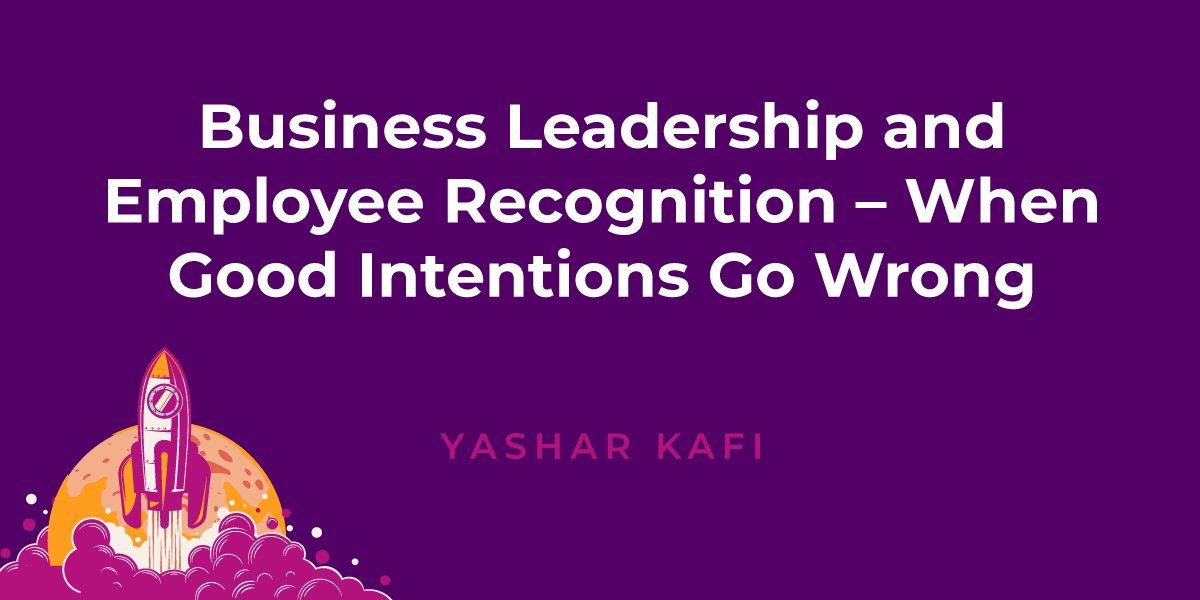Business Leadership and Employee Recognition – When Good Intentions Go Wrong
Recognition is a word that most of us associate with good intentions. The loose definition of recognition is to honor or award with acclaim, such as an award or acknowledgment—and when could that be a bad thing? While I wouldn’t go so far as to say that it’s bad, some employee recognition and incentive programs at corporations can end up misguided or subpar. And this is because not all employee recognition programs are created equally.
There are many reasons why, but let’s start by looking at some of the recognition and incentive programs that may have good intentions but may cause lousy morale among the team. Don’t get me wrong: Business leadership and employee recognition are crucial, but we need to get it right.
So, If you’re looking to set up an employee incentive or recognition program, take notes as we take a look at some bad examples so you can avoid these pitfalls at your own organization.
Employee Recognition Mistakes
When executed well, employee recognition programs can positively impact your overall culture and workers. But, when a recognition program misses the mark and is riddled with mistakes, it can bring down the overall office morale. There are a few common employee recognition mistakes to avoid. We highlight a few of these common mistakes in further detail.
Inauthentic Celebrations
Celebrating every small victory can seem inauthentic. For example, the comedy sitcom “Superstore” has an episode where they hold an “Employee Celebration Day”—with no link to any specific achievements—which happens to fall around the time employees are filling out their union cards. Management includes a bunch of random activities and shows an anti-union video during the celebration. In the end, it’s an inauthentic celebration that ends up looking like they have an ulterior motive or are trying to hide something.
Although this is a comedy show, the reason it’s funny is that it’s totally relatable! Genuinely highlighting valid achievements will show you appreciate workers and care about their efforts—anything else is blowing smoke.
Rewarding High Numbers and Ignoring Bad People
This pitfall comes when leaders focus solely on bottom-line numbers and rankings rather than the character and overall performance of the individual, and it often comes at a high price. Think about it: If your star team member achieves the highest marks fiscally yet is a miserable person and not a team player in the workplace. This can lower the morale of your office. And conflict among the ranks is a real game crusher. (Think Dwight in The Office).
Not Knowing Who or What You Are Celebrating
Being out of touch with who is doing the incredible work—or even the actual work that is going on—in your organization is one of the worst mistakes you can make. After all, what are you saying to the person you are trying to recognize if you pronounce their name wrong? Or what does it show when you don’t know what they are being honored for? And if you aren’t aware of all of the people involved in that achievement—whatever it is and whoever they are—your show of recognition will seem insincere and tasteless. This defeats the whole purpose.
Scripted or Cookie Cutter Celebrations
Think about when you receive a nondescript chain letter addressed to you and about a billion other recipients: How special do you feel? I’m wagering, not very. Now, think about how you feel on those rare occasions that you receive a personalized letter written specifically for you and concerning you alone. Special, right?
This same concept applies to recognizing your employees. Take the time to recognize them based on their specific merits and performance rather than borrowing from a (potentially cheezy) script. They will likely respond with even better performance fuelled by lifted morale. And who doesn’t like to feel authentically seen?
These good intentions gone wrong are just a few of the things that combine to create a toxic workplace culture. We challenge you to celebrate your employees with authenticity instead.
To learn more, connect with ustoday.




